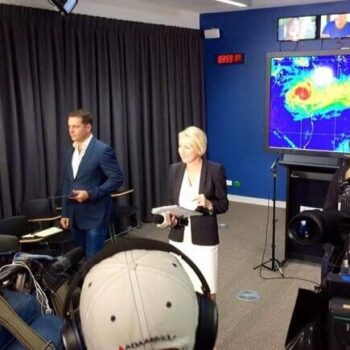
How to pitch to a newsroom
Ever wanted to pitch your story to a newsroom? Here’s how.
A newsroom is a busy place. In fact, with digital and online content growing by the day (seemingly by the hour!) – journalists have never been busier. Add to this literally hundreds of organisations vying for a journalist’s attention and you can see how difficult it is to get you and your story noticed.
Have a great angle
Firstly, you need to think of a good story angle that will appeal to the organisation’s readers, listeners or viewers. Don’t send out mass press releases – a targeted approach works best. If it’s a story about raising children, you’re not going to send it to a technology mag.
If it’s a Brisbane only story, you’re not going to send it out nationally. This may seem obvious but pitching to all and sundry will just waste journalists’ time, and put you at a disadvantage for next time.
Get your story together (along with imagery)
In the past a press release or media kit would suffice – your story would end up in print, on radio or tv – or if you were unlucky, the nearest bin.
Video news releases(VNR) or electronic press kits are the new form of communication and can be a very effective tool. If you have the budget for it, get professional help to put one together. It will save the journalist or news organisation valuable time if they don’t have to send a crew to get the pictures, making it much more likely they’ll run the story. The VNR should be around five minutes in duration, be accompanied by background info and sent electronically.
Make it easy for the journalist
Try to serve everything to a journalist on a plate – background information, pictures, case studies – whatever they’ll need to make a story come to life. Supplying everything on a platter makes their job that much easier, and will be much appreciated.
In an email pitch, keep the wording brief – you’ll either get, or lose, their attention in the first few lines – so make them good. Also include a name, email address and contact number for the journalist to reach out it they’d like more info, or to follow-up.
After all the effort you’ve gone to, make sure you pitch to the appropriate person. Newsroom staffers can change frequently, so make sure your contact list is up-to-date and you are pitching your idea to the right person.
Contact them through social media
Ironically, the very thing that makes a newsroom busy is the same platform you can use to your advantage. Make contact with journalists online through social media platforms like Instagram, Twitter and Facebook. Most will have professional accounts so use these, not their personal ones.
If you get calls or emails back straight away – GREAT! You could be on to a winner. If not, try following up with a phone call a few hours later, or the next day if your story isn’t time sensitive. Don’t hound a journo – generally if they’re interested, you’ll hear back quickly.
Other tips:
- If you’ve issued a media release or story idea that features a spokesperson, ensure they’re available for interviews the day you send out the story idea
- Never call a radio newsroom on the hour or half hour – they’re frantically putting together their bulletins and/or reading to air
- Think about when you’re pitching – if you issue a media release early in the morning (like 4 or 5am) you’re more likely to get breakfast news coverage. If you send it at 5pm, you’re too late.
Regardless of the outcome, thank the journalist for their time – it just makes for better relationships all round.
Good luck!


